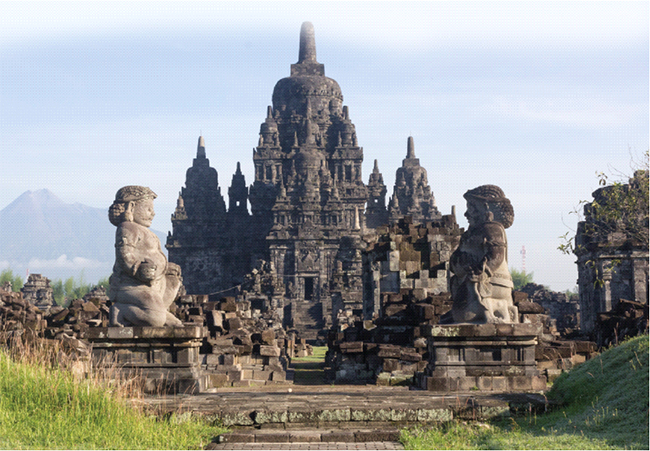Candi Sewu of Java is an 8th century Buddhist temple located in central Java, just near the Prambanan temple complex. The original name of the temple compound was Manjusrigrha. Sewu temple was constructed 70 years prior to the Shaivaist temple of Prambanan complex. The inscription dated 792 AD gives the details of the beauty of the tower or Shikhar of the temple. A prince of the Rakai Pikatan dynasty, who initiated this construction, married a Buddhist princess. Thus, the architecture of the temple complex is also the marriage of Hindu and Buddhist features. The complex suggests that the Hindu and Buddhist communities lived in harmony during the era in which the temples were built. The scale of the temple complex is huge which implies that Candi Sewu was a royal Buddhist temple that served as an important religious site. The rectangular ground of the complex measures 185 meters north-south and 165 meters east-west. There are entrances on all four cardinal points, but the main entrance is located on the east side. The entrances are guarded by Dwarpala. There are 249 buildings in the complex arranged in a Mandala pattern around the main central hall. Smaller temples are arranged in regular concentric rows. Second largest temples called Apit temples are on the North-South and East- West axis. The main temple measures 29 meters in diameter and soars up to 30 meters high. The main temple has five rooms, one large Garbha Griha in the centre and four smaller rooms in each cardinal direction.
The transition of society from one phase to another is depicted by reminisces of architecture. The cultural influence of Bharat on Java as well as Sumatra is evident since the 1st and 2nd century. Thin line demarcating the differences between the two is merged in the architecture of the place. Presence of Dwarpalas, arrangement of stupas in pyramidal form and many other features display the integration of two religions in the land quite far from Bharat. n

















Comments